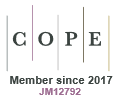Just Accepted
This article has been peer reviewed and accepted for publication. It is in production and has not been edited, so may differ from the final published form.
The pros and cons of increasing soil organic matter in dryland cropping systems
Abstract
Soil organic matter (SOM) in drylands accounts for approximately 33% of global soil organic carbon (SOC) stocks and regulates many processes. Anthropogenic activities and climatic changes have, and continue, to significantly influence SOM levels. However, management practices that improve the soil carbon (C) and macronutrient balance can increase or maintain SOM. These include (i) maximising C inputs from grain crops, (ii) integrating livestock and pasture phases, (iii) using cover crops, (iv) intercropping, (v) managing tillage and stubble, and (vi) organic amendments. Estimated SOC increases achievable in drylands, ranging from 60 to 114 kg ha yr–1, fall short of the ambitious ‘4 per mille’ target—equivalent to a 0.4% annual increase in initial soil C, or at least 240 kg C ha–1 yr-–1 for drylands (assuming a global mean dryland SOC stock of 60 t C ha–1)—advocated by some scientists. In dryland systems, we propose a more rational approach, advocating for context-specific optima with a clear understanding of the benefits and costs to evaluate the suitability of management practices for improving SOM. The benefits include amelioration of soil constraints, improving nutrient and water availability, enhancing system resilience and sustainability, and potential participation in C markets. However, costs can be significant and are typically divided into two main categories: (i) economic (e.g., financial costs required for implementing management practices) and (ii) environmental (e.g., the potential for increased nutrient loss via emissions or leaching due to enhanced nutrient cycling). The net benefit or cost is highly context-dependent, with the unique challenges of dryland environments often overlooked in the literature. This review examines the primary strategies for maintaining or increasing SOM in dryland arable systems, the associated benefits and costs, methods for monitoring SOC stocks, and future challenges and opportunities.
CP24257 Accepted 17 June 2025
© CSIRO 2025



